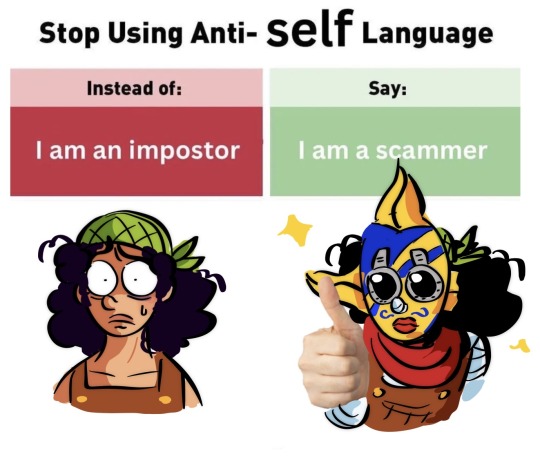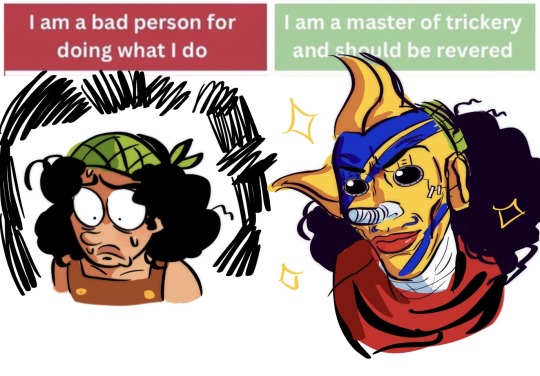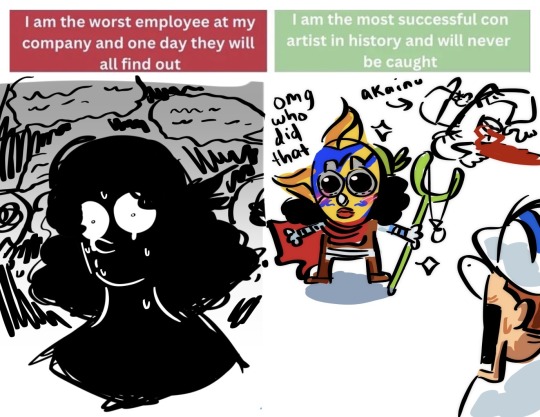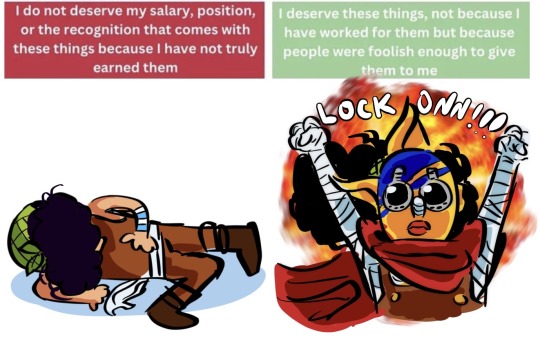mindy | mostly akayona, naruto, one piece & gintama | anime sideblog | i follow back w/ mvnicsoul!! 🤍| 23
Don't wanna be here? Send us removal request.
Text

don't go Nanamin don't go
34K notes
·
View notes
Text
12th century architect: this cathedral is looking so good. it could still use a little something, though. maybe a scary creature or two?
the grotesque gargoyle:

11K notes
·
View notes
Text

turbo granny makes an exchange
7K notes
·
View notes
Text
ace trying to comfort luffy after a nightmare
(plus an actual drawing i made cuz i got inspired)

4K notes
·
View notes
Text
To me, what is so fantastic about One Piece Fan Letter is the emphasis on the way the Straw Hats have created these connections in the lives of people they have never met. The ending scene, with all the hands putting together the puzzle pieces, and the way that all these connections came together in one dazzling way-- I loved that. I teared up at that. Wherever the Straw Hats go, they leave behind all of these puzzle pieces for people to put together and create bonds that would not have existed had the Straw Hats not shown up!
And it also just... Makes me so in love with the concept of the world after Luffy becomes King of The Pirates. I know that Oda has the final chapter planned in his head, and I doubt we will really see the long lasting effects of Luffy achieving the title of Pirate King + his dream, and I really do not want a sequel series ala Boruto or Yasahime, but.... I want to see a world in which children believe they can become a Brave Warrior of the Sea thanks to Usopp, I want to see more children look at Nami and realize they don't NEED to have a Devil Fruit or Haki or muscles to have adventures. I want to see the next generation of the One Piece world believe so strongly in their dreams, that they set out to accomplish them.
One Piece Fan Letter really opened the door, I think, for more and more stories about the "regular" people in the world of One Piece, the people you don't see in the arcs because they're the nondescript background characters, and how the Straw Hat Crew has changed them. And I want that. To me, that is fantastic.
3K notes
·
View notes
Text






Drew these a while back, around a year ago actually, but I never posted these here! (The JJK fanart phase was real)
2K notes
·
View notes
Text
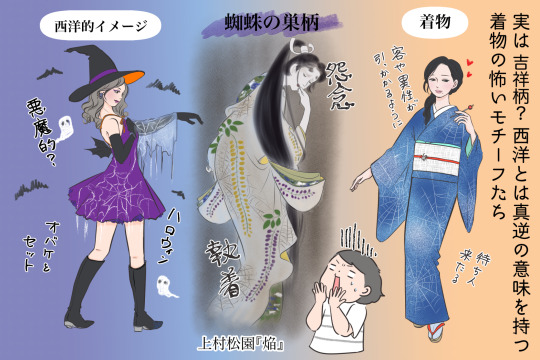
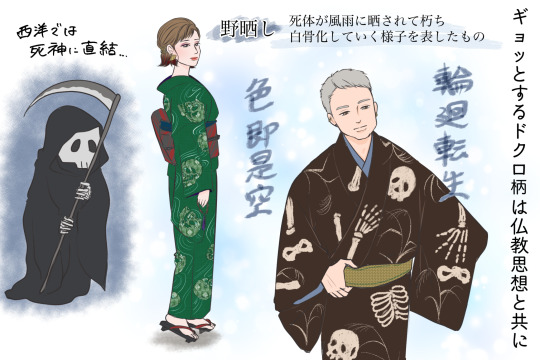

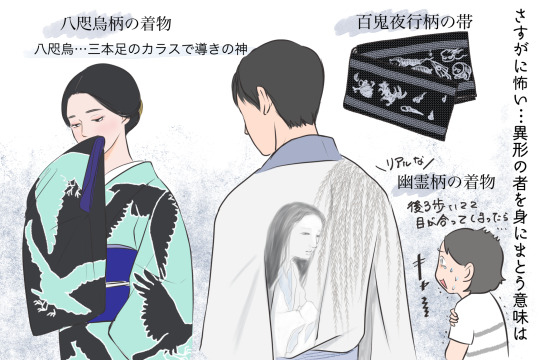
Lovely article+illustrations by Kimono Ichiba (via Tanpopo <3), overviewing famous "scary"patterns... which are in fact often auspicious as traditional Japanese patterns ;)
I believe I have them all on the blog somewhere but it's nice having them in one place so let's go!
Spiderwebs (kumo no su)
In ancient China, spider were seen as auspicious messengers connecting Heaven to Earth.
As the spider catches its prey in its web, spiderweb came to signify "grasping happiness".
Apparently during Edo period, prostitutes and geisha used spiderweb patterned items as a good luck charm (meaning something like "this customer will come back").
A very famous spiderweb depiction is the Lady Rokujo ukiyoe [焔 honô (the flame of passion)] by female artist Uemura Shoen. Wisteria caught in the web could mean ``I hope [Prince Genji] will come tonight'' which is pretty sad considering her story T_T
Skulls (dokuro)
Exact name for human remains pattern is "nozarashi" (lit. "weather beaten") ie bones scattered in a field. This depicts a corpse turned to bones/unveiled from its grave by the elements.
Skulls are thought to ward off evil and bad luck. Bones can also symbolize a do-or-die spirit, or hope for rebirth after death.
OP stresses a theory linking bones pattern to a buddhist saying 色即是空 shikisokuzekū "form is emptiness, matter is void, all is vanity". An interpetation is that we'll all turn to dust one day so we're all equal.
Bones patterns are often seen during Obon (Festival of the dead) season.
Monsters, ogres and ghosts (yôkai / oni / yûrei)
Monsters patterns were then worn to ward off bad luck and evil spirits. Reasoning is: let's repel scary things by wearing an even scarier monster!
Fearsome monsters were especially use by people with dangerous jobs, like Edo period firemen.
Firemen often had the lining of their heavy fire attire (火事装束 kajishouzoku) embelished with lavish designs of brave heroes and fantastic monsters. It was both a talisman and a way to show that they did not fear danger or death.
Another reason behing monsters patterns is the Edo period love for "scary" entertainements, be it ghost stories, parlor or other types of games, art (see for ex. Utagawa Kuniyoshi), etc. And Edo city dwellers were all about being fashionable so a monster pattern would have been considered quite iki!
1K notes
·
View notes
Photo







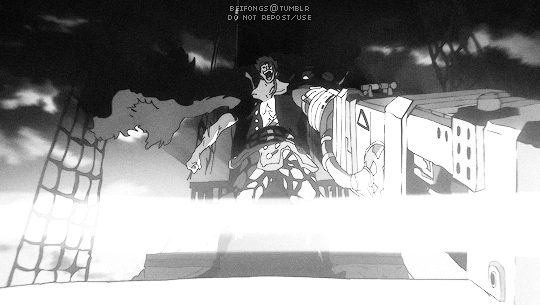

Looks like he’s foreseen a terrible future…
597 notes
·
View notes
Text

Source: Dorohedoro MUD AND SLUDGE Artbook
by Q Hayashida
Link to the full Artbook
141 notes
·
View notes
Text
A brief look into the Hand seals (印) of Domain Expansions
The hand seal used by Domain expansion users is shirushi (印) or mudra of various bodhisattvas. In normal practice, these seals are performed while chanting the mantra for respective Bodhisattva.
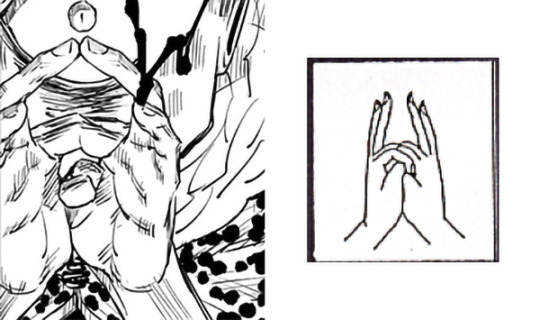
1. Jougo, Domain: Coffin of Iron Mountain (蓋棺鉄囲山 / gaikan tecchizen); seal is associated with Daikokuten.
Also known as Mahakala, or "the Great Black one", or "the Great Time", Daikokuten is originated from Shiva in Hinduism, who plays role as the destroyer of all things as per his connection to "time" (kala), whose aspects later adopted by Buddhism. In Japan, Daikokuten is one of the seven lucky gods (七福神 / shichifukujin) associated with food and wealth.
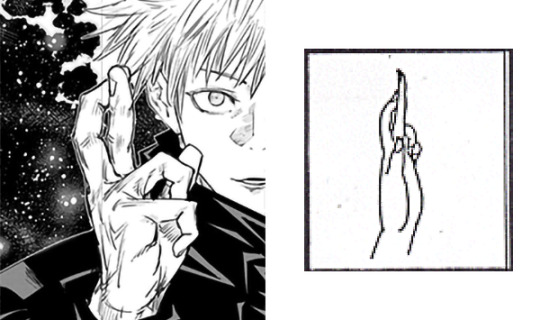
2. Gojou Satoru, Domain: Unlimited Void (無量空処 / muryoukuusho); seal is associated with Taishakuten or Sakra
Sakra means "powerful" or "mighty", and is originated from Indra. Taishakuten is often depicted as a pair with Brahma (or Bonten) as the greatest protector deities (dharmapala) of Buddhism. As Indra governs other devas in heaven, Taishakuten is also depicted to govern other 32 gods in heaven and served by the Four Heavenly Kings (四天王 / shitennou).
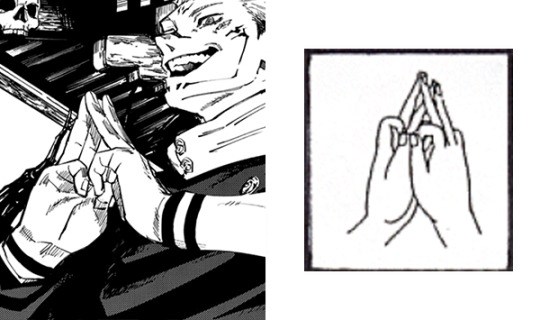
3. Ryoumen Sukuna, Domain: Malevolent Shrine (伏魔御厨子 / fukuma mizushi); seal is associated with Enmaten or Yama
Enmaten is more famously known as King of Hell, he is a deity who governs fate, death, and underworld. He passes judgements to soul of people who had died, to send them to the appropriate afterworld. He is often depicted to have fierce expression. He is also the protector deity of south direction.

4. Mahito; Domain: Self-Embodiment of Perfection (自閉円頓裹 / jihei endonka); seals are associated with Kokuuzou bosatsu or Akasagharba and Gigeiten
Kokuuzou bosatsu (虚空蔵菩薩) is known as one of the eight great bodhisattvas, whose wisdom is said to be as vast as the space, hence his association with the space element (虚空 ; kokuu, lit. "empty space"). He is worshipped for wisdom, knowledge, and memory.
On the other hand, Gigeiten is a celestial maiden who governs over entertainment and good fortune. She is said to have been born from the hair of Maheshavara, thus she possesses good looks. She is also a master of various art forms.

5. Fushiguro Megumi, Domain: Chimera Shadow Garden (嵌合暗翳庭 / kangou'an eitei), seal is associated with Bhaisajyaguru or Yakushi Nyorai
Also called as Medicine Buddha, Yakushi Nyorai is known for his twelve vows to attain enlightenment. He aspired to heal people's illnesses, cure diseases, and erase the sufferings of sentient beings. The twelve Heavenly Generals (十二神将 / juuni shinshou) are his followers, originated as yakshas who were converted by his teachings. Hence Makora, or Mahoraga as one of Fushiguro's shikigami.

6. Okkotsu Yuuta, Domain: unknown, seal is associated with Dakini
Dakini is a type of female demon or yakshini. The portrayal of Dakinis vary among beliefs, ranging from flesh-eating female demons, similar to Kali in Hinduism, to goddess associated with constituents of human body. In Japan, the Dakini later were coalesced into a single deity called Dakiniten, who later syncretized with deity Inari, goddess of agriculture, represented by a celestial maiden riding white fox.
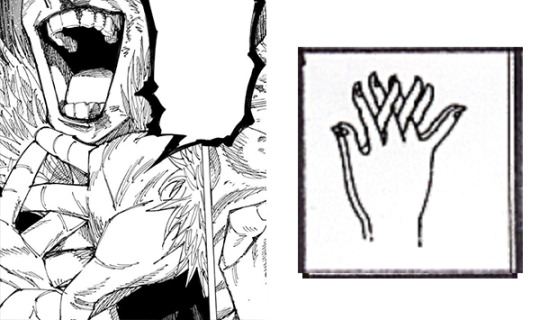
7. Ishigoori Ryu, Domain: unknown, seal is associated with Kujaku Myo-ou or Mahamayuri
Mahamayuri is a female bodhisattva, whose name means "Great Peacock". She is depicted to have three faces and four arms. Because peacock eats poisonous snakes such as cobra and other pests, Mahamayuri became known to be able to protect her followers from pain and disasters. She is also believed to be able to protect people from poisoning, either physically or spiritually.

8. Uro Takako, domain: unknown, seal is associated with Kundali
Also known as Amritankundali, he is a wrathful protector deity regarded as the manifestation Ratnasambhava, who was focused on equality, to destroy greed and pride. He is also said to be manifestation of Akasagarbha. In addition the nectar of immortality is believed to be originated from him.

9. Hakari Kinji, Domain: Idle Death Gambler (坐殺博徒 / zasatsu bakuto), seal is associated with Benzaiten or Saraswati
Benzaiten as one of the seven lucky gods (七福神 / shichifukujin) is worshipped for monetary fortune. She is often depicted playing biwa as goddess of music. Saraswati is also regarded as goddess of river, hence she becomes known as goddess of "all things flow"; water, time, music, eloquence, fortune, and knowledge. Another version of Benzaiten depicted her as a protector deity having eight hands holding weapons; a bow (弓 / yumi), arrow (箭 / sen), sword (刀 / katana), ax (斧 / ono), spear (三股戟 / sankogeki), long pestle (独鈷杵 / tokkosho), iron wheel (輪 / rin), and rope (羂索 / kenjaku).
Other known domain expansion but unknown hand seal
10. Hanami, domain: unknown, seal is unknown
11. Dagon, domain: Horizon of Captivating Skandha (蕩蘊平線 / tau'un heisen). Seal has "golden pouch" (宝袋 / houtai) motif, which symbolizes wealth.
12. Higuruma Hiromi, domain: Deadly Sentencing (誅伏賜死 / chuubuku shishi), seal is unknown.
誅伏 (chuubuku) means to be sentenced for one's crime or sin, while 自裁 (shishi) means to be ordered to suicide. So his domain means sentenced suicide due for one's sin.
3K notes
·
View notes
Text
Ten Shadows Technique
Yeah, let's talk about the Ten shadows technique. Again.
Ten shadows technique is derived from the lore of Tokusa no kandakara (十種神宝) or Ten sacred treasures from the Shintoism lore. These are the symbols that depict them - and most of these can also be found engraved on the shikigami summoned using the technique

Okitsukagami (Mirror of the Deep) -- Toad (Fushiguro's)
Hetsukagami (Mirror of the Shore) -- Max Elephant (both Fushiguro's and Sukuna's)
Yatsuka no tsurugi (Eight hands Long Sword) -- Makora (not engraved clearly like most, but literally in its name when Fushiguro summoned it)
Ikutama (Jewel of Life)
Makarukaeshi no tama (Jewel of Resuscitation) -- Round Deer (Sukuna's; very perfect with its use for reverse curse energy)
Tarutama (Jewel of Plenty) -- Black Jade Dog (Fushiguro's)
Chikaeshi no tama (Jewel of turning back on the Road) -- White Jade Dog (Fushiguro's). The combination of Tarutama and Chikaeshi no tama's symbols make up the symbol on Kon Jade Dog.
Orochi no hire (Snake[-repelling] Scarf)
Hachi no hire (Bee[-repelling] Scarf) -- Piercing Ox (Sukuna's)
Kusagusa no mono no hire (Scarf [to ward off] Various Things)
That leaves Nue, Escape Rabbit, and Serpent. Serpent should be ikutama by the glimpse of it, but it's unclear. So Nue and Rabbit would be Orochi no hire and Kusagusa no mono no hire.
After a few years of guessing game, we finally have the full roster of shikigami army that the Ten Shadows technique can summon. Although with unexpected twist of not one, but two users.
381 notes
·
View notes
Text
A brief look into the Hand seals (印) of Domain Expansions
The hand seal used by Domain expansion users is shirushi (印) or mudra of various bodhisattvas. In normal practice, these seals are performed while chanting the mantra for respective Bodhisattva.

1. Jougo, Domain: Coffin of Iron Mountain (蓋棺鉄囲山 / gaikan tecchizen); seal is associated with Daikokuten.
Also known as Mahakala, or "the Great Black one", or "the Great Time", Daikokuten is originated from Shiva in Hinduism, who plays role as the destroyer of all things as per his connection to "time" (kala), whose aspects later adopted by Buddhism. In Japan, Daikokuten is one of the seven lucky gods (七福神 / shichifukujin) associated with food and wealth.

2. Gojou Satoru, Domain: Unlimited Void (無量空処 / muryoukuusho); seal is associated with Taishakuten or Sakra
Sakra means "powerful" or "mighty", and is originated from Indra. Taishakuten is often depicted as a pair with Brahma (or Bonten) as the greatest protector deities (dharmapala) of Buddhism. As Indra governs other devas in heaven, Taishakuten is also depicted to govern other 32 gods in heaven and served by the Four Heavenly Kings (四天王 / shitennou).

3. Ryoumen Sukuna, Domain: Malevolent Shrine (伏魔御厨子 / fukuma mizushi); seal is associated with Enmaten or Yama
Enmaten is more famously known as King of Hell, he is a deity who governs fate, death, and underworld. He passes judgements to soul of people who had died, to send them to the appropriate afterworld. He is often depicted to have fierce expression. He is also the protector deity of south direction.

4. Mahito; Domain: Self-Embodiment of Perfection (自閉円頓裹 / jihei endonka); seals are associated with Kokuuzou bosatsu or Akasagharba and Gigeiten
Kokuuzou bosatsu (虚空蔵菩薩) is known as one of the eight great bodhisattvas, whose wisdom is said to be as vast as the space, hence his association with the space element (虚空 ; kokuu, lit. "empty space"). He is worshipped for wisdom, knowledge, and memory.
On the other hand, Gigeiten is a celestial maiden who governs over entertainment and good fortune. She is said to have been born from the hair of Maheshavara, thus she possesses good looks. She is also a master of various art forms.

5. Fushiguro Megumi, Domain: Chimera Shadow Garden (嵌合暗翳庭 / kangou'an eitei), seal is associated with Bhaisajyaguru or Yakushi Nyorai
Also called as Medicine Buddha, Yakushi Nyorai is known for his twelve vows to attain enlightenment. He aspired to heal people's illnesses, cure diseases, and erase the sufferings of sentient beings. The twelve Heavenly Generals (十二神将 / juuni shinshou) are his followers, originated as yakshas who were converted by his teachings. Hence Makora, or Mahoraga as one of Fushiguro's shikigami.

6. Okkotsu Yuuta, Domain: unknown, seal is associated with Dakini
Dakini is a type of female demon or yakshini. The portrayal of Dakinis vary among beliefs, ranging from flesh-eating female demons, similar to Kali in Hinduism, to goddess associated with constituents of human body. In Japan, the Dakini later were coalesced into a single deity called Dakiniten, who later syncretized with deity Inari, goddess of agriculture, represented by a celestial maiden riding white fox.

7. Ishigoori Ryu, Domain: unknown, seal is associated with Kujaku Myo-ou or Mahamayuri
Mahamayuri is a female bodhisattva, whose name means "Great Peacock". She is depicted to have three faces and four arms. Because peacock eats poisonous snakes such as cobra and other pests, Mahamayuri became known to be able to protect her followers from pain and disasters. She is also believed to be able to protect people from poisoning, either physically or spiritually.

8. Uro Takako, domain: unknown, seal is associated with Kundali
Also known as Amritankundali, he is a wrathful protector deity regarded as the manifestation Ratnasambhava, who was focused on equality, to destroy greed and pride. He is also said to be manifestation of Akasagarbha. In addition the nectar of immortality is believed to be originated from him.

9. Hakari Kinji, Domain: Idle Death Gambler (坐殺博徒 / zasatsu bakuto), seal is associated with Benzaiten or Saraswati
Benzaiten as one of the seven lucky gods (七福神 / shichifukujin) is worshipped for monetary fortune. She is often depicted playing biwa as goddess of music. Saraswati is also regarded as goddess of river, hence she becomes known as goddess of "all things flow"; water, time, music, eloquence, fortune, and knowledge. Another version of Benzaiten depicted her as a protector deity having eight hands holding weapons; a bow (弓 / yumi), arrow (箭 / sen), sword (刀 / katana), ax (斧 / ono), spear (三股戟 / sankogeki), long pestle (独鈷杵 / tokkosho), iron wheel (輪 / rin), and rope (羂索 / kenjaku).
Other known domain expansion but unknown hand seal
10. Hanami, domain: unknown, seal is unknown
11. Dagon, domain: Horizon of Captivating Skandha (蕩蘊平線 / tau'un heisen). Seal has "golden pouch" (宝袋 / houtai) motif, which symbolizes wealth.
12. Higuruma Hiromi, domain: Deadly Sentencing (誅伏賜死 / chuubuku shishi), seal is unknown.
誅伏 (chuubuku) means to be sentenced for one's crime or sin, while 自裁 (shishi) means to be ordered to suicide. So his domain means sentenced suicide due for one's sin.
3K notes
·
View notes
Photo





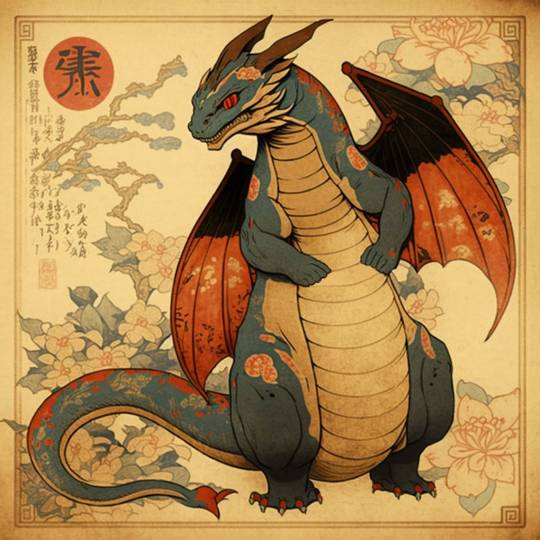
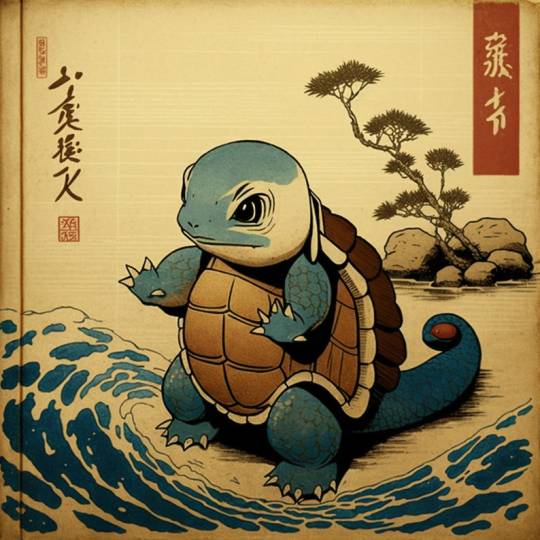
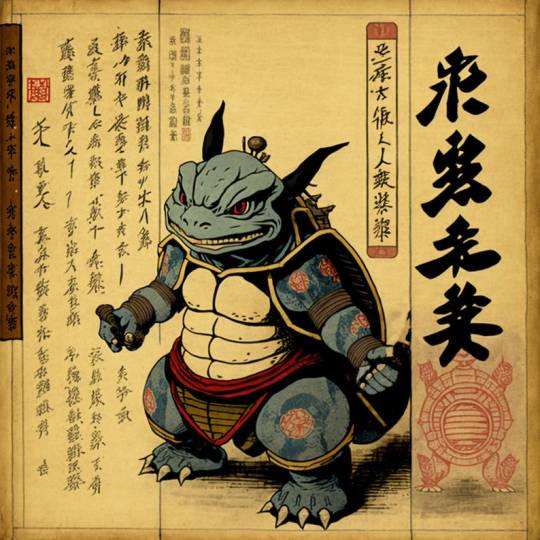

Kanto Starter Pokemon Japanese Ukiyo-e Style Artwork made by Lanipuna
40K notes
·
View notes
